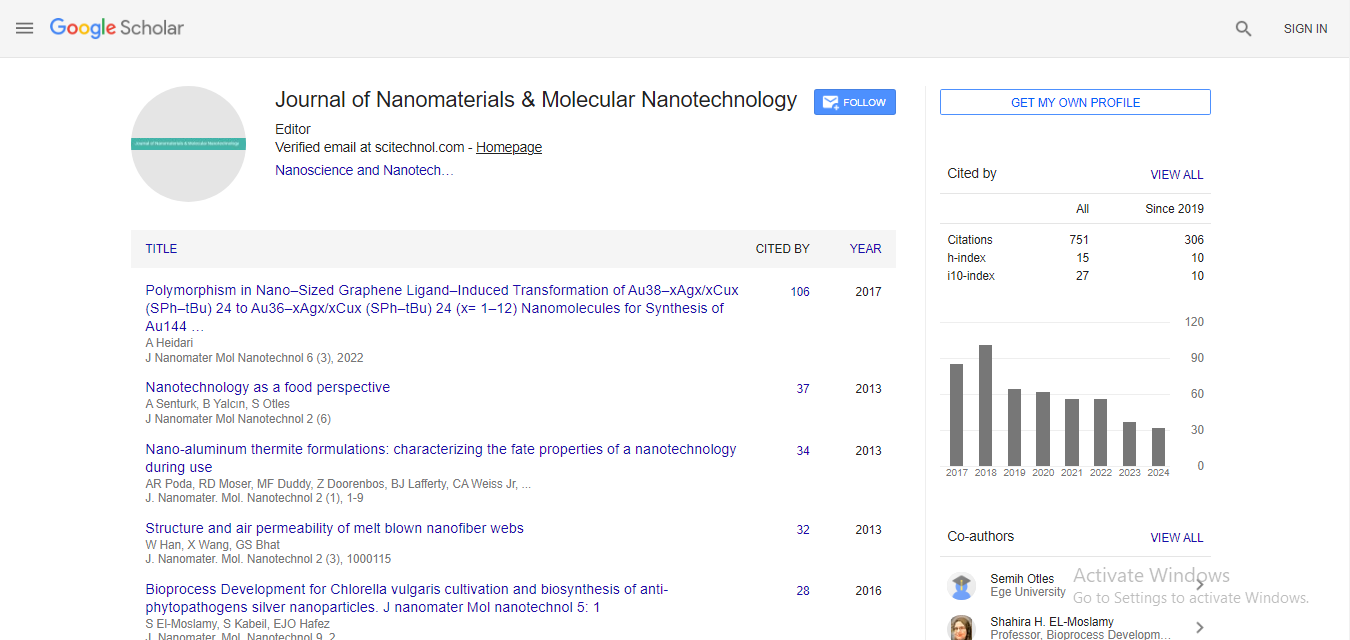Effects of hydroxyapatite -polymethyl methacrylate nanocomposites on human red cell indices and serum proteins
Riska MRF, Gamagedara TP and Rajapakse RMG
University of Peradeniya, Sri Lanka
: J Nanomater Mol Nanotechnol
Abstract
HA – PMMA nanocomposites can be used as a potential biomaterial for orthopedic applications. The wear NPs would be prone to bind with proteins to form protein-particle complexes and to interact with visible components in the blood. Therefore, this study was focused to determine the effects of HA – PMMA nanocomposites (10% HA) on human red cell indices and serum proteins by in vitro method. Blood samples and serum samples of healthy adults were mixed with the nanocomposites and incubated. Red cell indices were calculated using hemoglobin level, packed cell volume and red blood cell counts which were determined by cyanomethemoglobin, microhematocrit and counting chamber methods respectively and serum total protein and serum albumin were analyzed by using Biuret method and colorimetric Bromocresol green methods respectively. Descriptive statistical method and t paired test ware used to analyze data. The study shows HAP-PMMA nanocomposites interact with RBCs, hemoglobin (Hb) and serum proteins. There was a significant decrease in the values of MCV, MCH, MCHC, serum total proteins and serum albumin due to the effect of the nanocomposite. In addition, shape and size of red cells were changed. Therefore, there can be an effect on hemocompatibity by releasing particles of nanocomposites to the blood stream. Within the study, importance of in vitro tests for evaluation of the compatibility of nanocomposites with human blood could be demonstrated.
Biography
E-mail: tpiumnil@pdn.ac.lk
 Spanish
Spanish  Chinese
Chinese  Russian
Russian  German
German  French
French  Japanese
Japanese  Portuguese
Portuguese  Hindi
Hindi 



